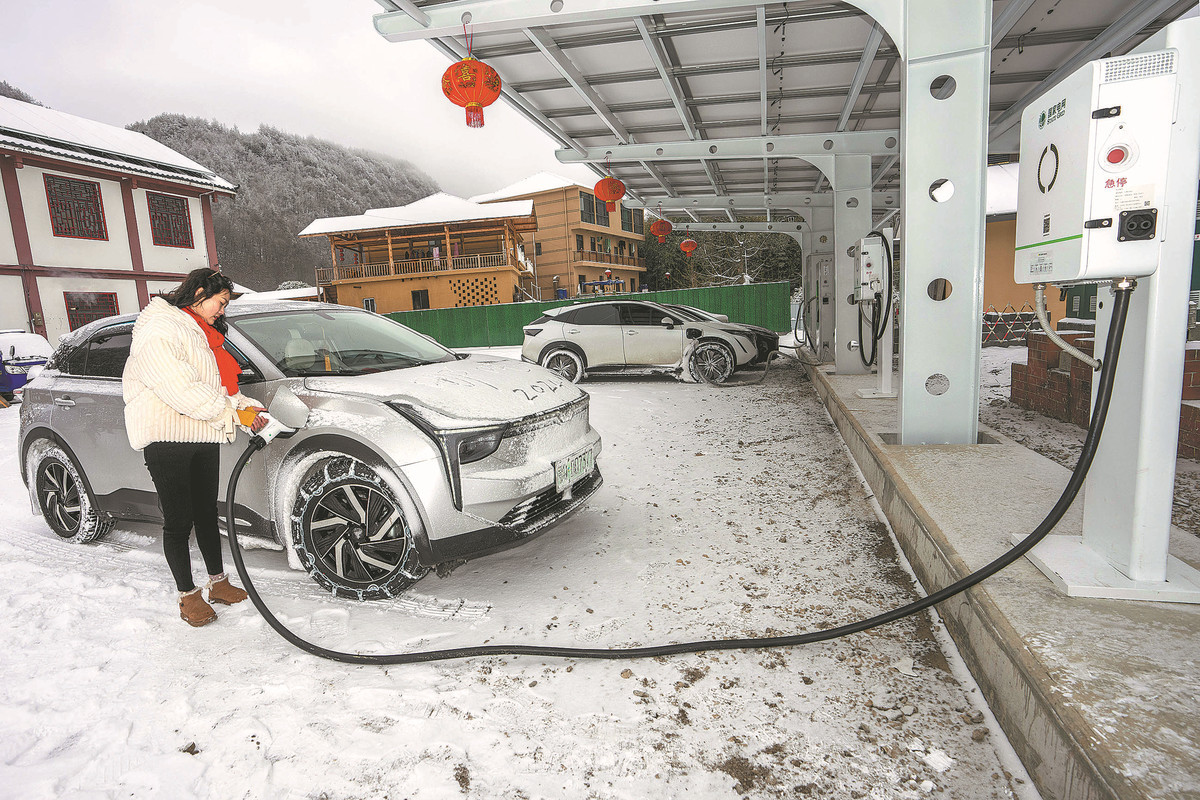
A villager uses newly established facilities to charge her electric car in Badong county, Hubei province, on Feb 2. WEN LIN/FOR CHINA DAILY
BEIJING — China’s electric vehicle charging infrastructure experienced steady growth in the first quarter of 2024, according to industry data.
The China Electric Vehicle Charging Infrastructure Promotion Alliance reported the addition of 716,000 charging piles during the January-March period, marking a 13.2 percent increase compared to the same period in 2023.
By the end of March, the nation’s charging pile count had exceeded 9.31 million, reflecting a significant year-on-year increase of 59.4 percent.
This expansion comes alongside a robust performance in the new energy vehicle sector, where both production and sales figures continue to exhibit rapid growth.
In the first quarter, NEV output saw a substantial year-on-year increase of 28.2 percent, reaching nearly 2.12 million units, while NEV sales climbed 31.8 percent to 2.09 million units.
NEVs comprise a broad category that includes Hybrid Electric Vehicles , Plug-in Hybrid Electric Vehicles, Battery Electric Vehicles, and Fuel Cell Electric Vehicles, while the term EV typically refers specifically to BEVs that are powered solely by electricity.
Rural expansion need
A recent alliance report highlighted a significant shift in NEV market dynamics. With ongoing advancements in NEV and power battery technology, the primary challenge hindering widespread NEV adoption has evolved from range anxiety to charging convenience.
The report also pointed out that charging infrastructure is predominantly concentrated in China’s more economically developed eastern cities, where it is positively correlated with the prevalence of NEV ownership.
The expansion of charging infrastructure in rural areas has not kept pace with the accelerating trend of NEV adoption throughout China, said the report, highlighting the need for a more expedited development and deployment of charging services in rural regions to support the growing NEV market.
